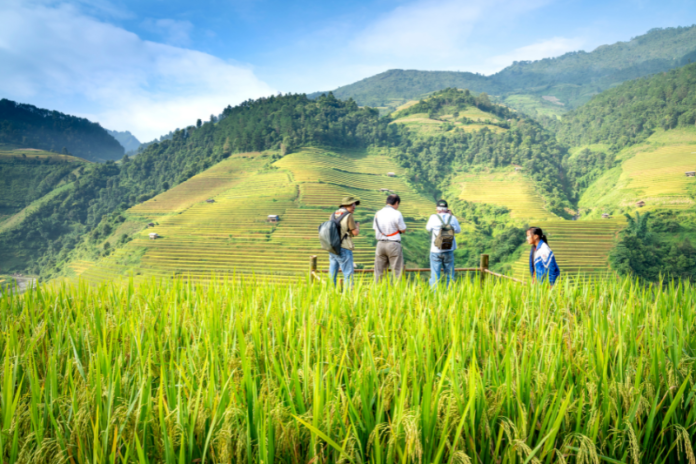Introduction
What if a scenario where agriculture doesn’t leave a trail of waste, where resources are recycled and reused in a continuous loop, and where sustainability becomes the norm, not the exception, This isn’t just a utopian dream, it’s the essence of the circular economy, and it’s increasingly finding its way into the fertile fields of agriculture, promising a future where food production and environmental responsibility go hand in hand.
A System Built on Take-Make-Waste
Traditionally, agriculture has operated linearly taking resources (land, water, nutrients), making food, and discarding waste. This linear system has led to a multitude of challenges:
- Soil Degradation: Overuse of fertilizers and monoculture farming depletes soil health and fertility, reducing productivity and requiring more inputs to maintain yields.
- Water Scarcity: Inefficient irrigation practices waste precious water, putting immense strain on already stressed water resources.
- Food Waste: One-third of all food produced globally ends up uneaten, representing a significant loss of resources and ethical implications.
- Pollution: Agricultural runoff pollutes waterways and contributes to greenhouse gas emissions, impacting ecosystems and human health.
Closing the Loop and Nourishing the Future
The circular economy offers a transformative approach, aiming to eliminate waste and pollution by keeping resources in use for as long as possible. Here’s how it applies to agriculture:
- Nutrient Cycling: Utilizing techniques like composting, manure management, and cover crops to return organic matter to the soil, replenishing nutrients and reducing reliance on chemical fertilizers.
- Water Conservation: Adopting practices like drip irrigation, precision agriculture, and rainwater harvesting to minimize water usage and maximize its effectiveness.
- Waste Upcycling: Turning food waste into valuable resources like biofuels, animal feed, or compost, minimizing waste and creating new opportunities.
- Renewable Energy: Integrating renewable energy sources like solar and wind power to reduce reliance on fossil fuels and decrease the carbon footprint of agricultural operations.
Examples of Circularity in Action

- Dutch “Potato Peel Power Plant”: Utilizing food processing waste to generate biogas, powering homes and businesses.
- Swedish “Black Soldier Fly Farm”: Turning food waste into protein-rich feed for animals, reducing reliance on traditional sources.
- Indian “Biogas from Manure”: Converting farm waste into biogas for cooking and lighting, offering clean energy and improved living standards.
- Global “Crop Rotation and Cover Crops”: Building healthy soil through diverse planting practices, reducing erosion, and improving water retention.
Beyond Technology
Transitioning to a circular agricultural system requires more than just technology, it demands a shift in mindset and collaboration across various stakeholders:
- Farmers: Adopting sustainable practices, embracing innovation, and collaborating with researchers and extension services.
- Consumers: Choosing food produced through responsible methods, minimizing food waste, and supporting circular initiatives.
- Policymakers: Creating policies that incentivize sustainable practices, promote circularity, and invest in research and development.
- Businesses: Designing products and packaging with circular principles in mind, minimizing waste throughout the supply chain.
Your Role in Cultivating a Circular Future
- Support farmers: Choose to buy from local farms that prioritize sustainability and circular practices.
- Reduce food waste: Plan meals, store food properly, and compost food scraps.
- Advocate for change: Support policies that promote circular agriculture and educate others about its benefits.
- Embrace innovation: Explore new technologies and practices that can reduce waste and resource use.
Remember: Every action, from choosing your groceries to supporting sustainable initiatives, contributes to a more circular food system. By joining forces, we can transform the way we produce food, ensuring a future where agriculture nourishes not just our plates, but also our planet. Imagine a world where farms are vibrant ecosystems, resources are cherished, and waste becomes a distant memory. Let’s work together to cultivate a circular future where food production and environmental responsibility flourish, hand in hand.
Disclaimer: The information provided in this guide is for informational purposes only and does not constitute legal or financial advice
For Media Enquiries/Guest Posting/Press Release – Write for us


